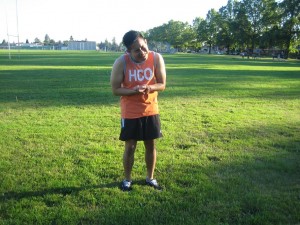A deep paper cut happens when a piece of paper or other thin and sharp material slices the skin. Paper cuts can also be caused by other thin and stiff materials. A loose sheet of paper is too soft to cut the skin, but it can be thin as the edge of a razor and exert pressure strong enough to cut the skin.
Paper cuts are very painful because they stimulate a large number of pain receptors in the surface of the skin. A shallow cut does not cause severe bleeding and the pain receptors are open to the air. A cut can be deep and cause pooling of blood due to irritation of the fibers of the paper which are sometimes coated with chemicals such as bleach. The tip of the fingernails is usually affected and accumulation of bacteria and dirt worsens the condition. Paper cuts require immediate treatment to avoid infections.
Treatment

- Rinse the wound using cool water to remove dirt or debris and lessen the stinging sensation.
- Stop the bleeding by applying gentle pressure on the affected area. Use a clean cloth or bandage and apply pressure and elevate the wound. Avoid touching the cut to prevent dislodging of the clot that can start the bleeding again.
- Clean the wound using soap and clean water. Clean the area around the injury. Avoid scrubbing the area too hard since it can open the paper cut further and worsen the condition. Rinse the wound in cool, running water until soap is completely washed off. Avoid using hydrogen peroxide, isopropyl alcohol and iodine in cleaning the wound to prevent damaging the healthy cell tissue and slow down the healing of the condition.
- Apply the prescribed over-the-counter antibiotic cream or ointments to keep the area moist, prevent infections and promote fast healing of the condition.
- Cover the wound using a bandage to prevent the possibility of infection and delay the healing of the condition. Put adhesive strip on the wound and avoid wrapping it too tight to prevent any disruption in the flow of blood to the area. Change bandages regularly especially if it becomes wet and dirty. Keep the area clean as much as possible for fast healing of the area.
- If there is difficulty in making the wound dry, use a liquid adhesive that contains a topical anesthetic to lessen the pain.
- Remove bandages when the cut has already healed. Leaving the bandage on for too long prevents the wound from getting enough oxygen needed to heal properly.
If bleeding continues for 30 minutes or there are signs of infections such as swelling, redness, severe pain and oozing pus from the affected area, seek medical help immediately.
More Information
The details posted on this page on a paper cut is for learning purposes only. To learn to properly provide wound care for a paper cut, enroll in a first aid course with one of our training providers.
